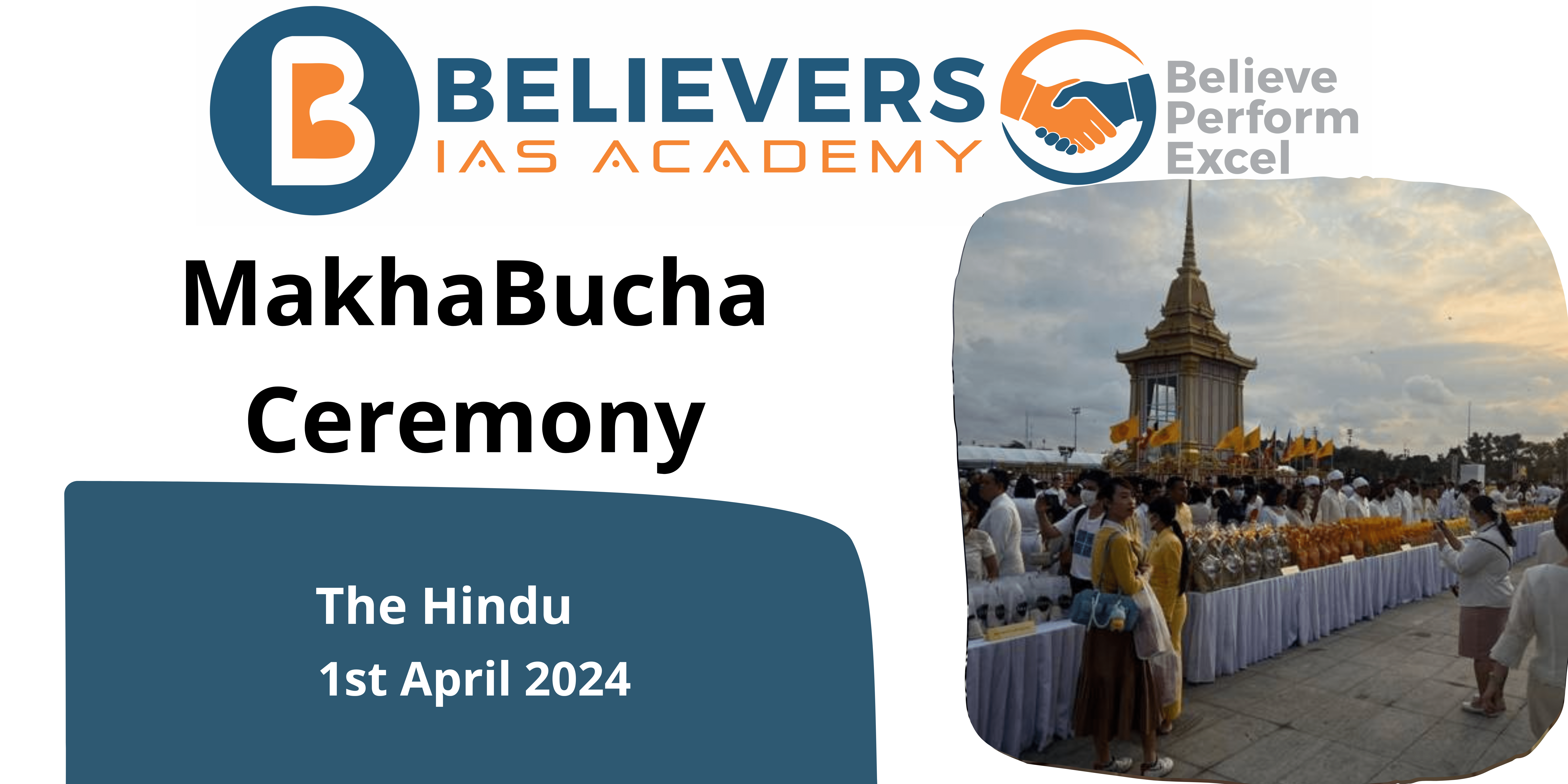MakhaBucha Ceremony
Context:
Recently, the MakhaBucha (Magh Puja) ceremony which is one of the five most revered events for Buddhists in Thailand, was gracefully conducted by the esteemed Somdet and other senior monks of Thailand.
Relevance:
GS-01 (History, Culture)
Key Highlights:
- The ceremony took place at the very venue where the holy relics of Lord Buddha and his two disciples, brought from India, are enshrined, symbolizing the profound spiritual connection between Thailand and the roots of Buddhism.
- MakhaBucha Day (Magha Puja) is a religious celebration marking Lord Buddha’s teachings to his disciples.
- MakhaBucha is celebrated according to the traditional lunar calendar, on the day of the full moon of the third lunar month.
- The term makha comes from the word “Magha” in Pali and it refers to the third lunar month, while bucha can be translated as “to worship,” both of which are derived from the Pali language used in Buddhist scripture.
- Therefore, the term MakhaBucha refers to a day intended for worshipping on the third lunar month.
- MakhaBucha, the first important religious festival in the Buddhist calendar, takes place in nations including Thailand, Laos and Cambodia, where the majority of Buddhists practice Theravada Buddhism, also known as “Buddhism of the south”.
- People visit the pavilion in large numbers to pay their respects to the Holy Relics brought from India for a 26-day exposition in Thailand.
The Origins of Buddhism
- Buddhism emerged in India over 2,600 years ago, presenting a transformative way of life.
- It has since become one of the significant religions in South and Southeast Asian countries.
- The religion revolves around the teachings and life experiences of its founder, Siddhartha Gautam, who was born circa 563 BCE into the royal family of the Sakya clan in Kapilvastu, near the Indo-Nepal border.
- At the age of 29, Gautama renounced his life of luxury and embraced asceticism. After intense meditation, he attained enlightenment under a pipal tree at Bodhgaya, Bihar.
- Buddha delivered his inaugural sermon in Sarnath, Uttar Pradesh, a moment known as the turning of the wheel of law. He passed away at the age of 80 in 483 BCE in Kushinagara, Uttar Pradesh, an event termed Mahaparinibban.
Key Tenets of Buddhism
- Buddha advocated for avoiding extremes and following the middle path, emphasizing individual responsibility for happiness. Central to Buddhism are the Four Noble Truths:
- Suffering (dukkha) is inherent in the world.
- Every suffering has a cause (Samudya).
- Suffering can be extinguished (Nirodha).
- This can be achieved by following the Eightfold Path (Atthanga Magga).
Eight-Fold Paths:
- It consists of various interconnected activities related to knowledge, conduct, and meditative practices.
- Right view
- Right intention
- Right speech
- Right action
- Right livelihood
- Right mindfulness
- Right effort
- Right concentration
Major Buddhist Texts
- Initially transmitted orally, Buddha’s teachings were eventually compiled into written form around 25 B.C.E. in Pali. The Three Pitakas, divided at the First Council in 483 BC, constitute the primary texts:
- The Vinaya Pitaka: Rules of conduct and discipline for monastic life.
- The Sutta Pitaka: Main teachings or Dhamma of Buddha, divided into five Nikayas or collections.
- The Abhidamma Pitaka: A philosophical analysis and systematization of the teachings. Other important Buddhist texts include Divyavadana, Dipavamsa, Mahavamsa, and Milind Panha.




